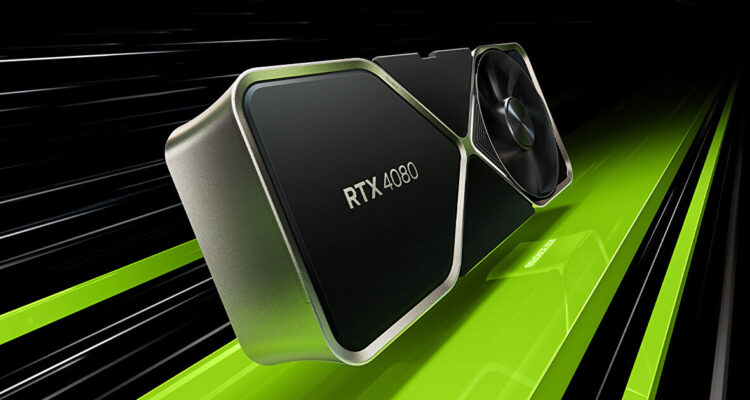
There’s going to be a lot of criticism aimed at Nvidia’s new RTX 4080 but it’s important to stress that there is nothing wrong with the Founders Edition we are reviewing today in terms of its construction, features and overall quality. Just like the RTX 4090, it’s a quality product created by a company that’s arguably at the top of its game, a firm at the pioneering forefront of graphics technology. Pricing is a different matter, however. It’s simply too high, even at its MSRP baseline and especially so with some of the third party partner cards we’ve seen. The product is a good chunk faster than any of the prior Nvidia Ampere offerings, including the RTX 3090 Ti, but the performance boost doesn’t always correlate with the price being charged, to the point where there are data points to suggest that the $1599 RTX 4090 actually offers a better deal.
The Founders Edition we’re looking at today arrives in the same packaging as the RTX 4090 and in the same excellent casing. The only difference is that while the same controversial 12VHPWR socket is on the card (yes, the melting one – and we’re still waiting for definitive answers on why that happened) but this time you get a dongle adapter with just three eight-pin PCIe inputs. That’s still more than enough, bearing in mind that the much more power-hungry RTX 3090 Ti shipped with the same adapter – and the RTX 4090 worked with it too. The uniform design across both Ada Lovelace cards also means that you’re getting the same video options: one HDMI 2.1 and three DisplayPort 1.4a ports.
As it’s a new generation of GPU, there are a certain suite of features common to both RTX 4090 and RTX 4080 – even though they’re using entirely separate chips. This means that the enhanced video encoding options of Ada Lovelace are preserved – much faster h.264/HEVC encoding, along with dual AV1 encoders. After the RTX 4090 review, we took a look at the AV1 functionality – and it’s impressive. For our high quality video downloads on digitalfoundry.net, we found that AV1 hardware encoding delivered higher quality than software-based h.264 with a big file size saving and while software-based HEVC encoding delivered smaller files, Nvidia AV1 offered up higher quality. For streamers and content creators, RTX 4000 is a big deal. Features like this should persist across all RTX 4000 products as newer and cheaper cards emerge.





